Best Sound Level Meter (That Actually Records Data) — Acoustic Nature

Lower numbers represent quieter sounds, while higher numbers represent loud ones. A slightly confusing thing about the scale is that it's logarithmic instead of linear, which means volumes can get loud quickly. For instance, 80 decibels is approximately twice as loud as 70 decibels, and 90 decibels is nearly four times as loud.
What Decibel Level is Safe And How to Reduce It
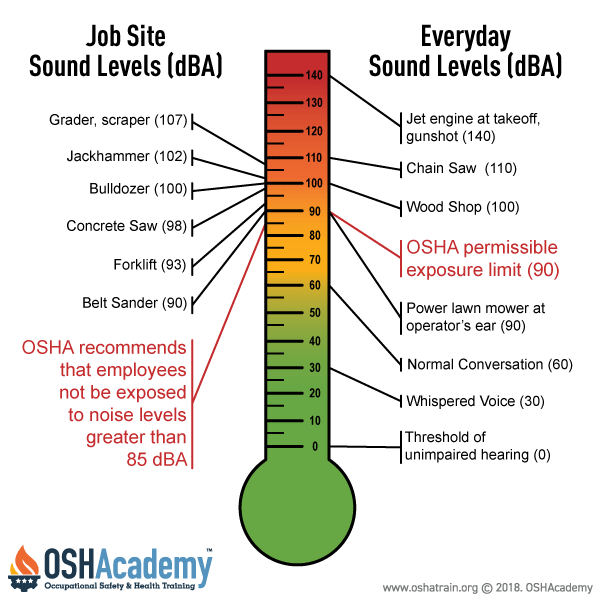
Some points of reference on the decibel chart include the following: 0 dB - The softest sound a person can hear with normal hearing. 10 dB - Normal breathing. 20 dB - Leaves rustling, a ticking watch. 30 dB - A whisper. 40 dB - Refrigerator hum, a quiet office. 50 dB - Moderate rainfall.
Is it possible for sound over 90 decibels to be inaudible to humans if the Hz are out of our
According to OSHA, the safe decibel level is lower than 85 dB to prevent hearing damage in humans. Exposure to sounds at or above this level can lead to gradual hearing loss over time. It is worth noting that the risk of hearing damage increases as the sound intensity and duration of exposure increase. For instance, exposure to sounds at 100 dB.
Decibel Scale Chart My XXX Hot Girl
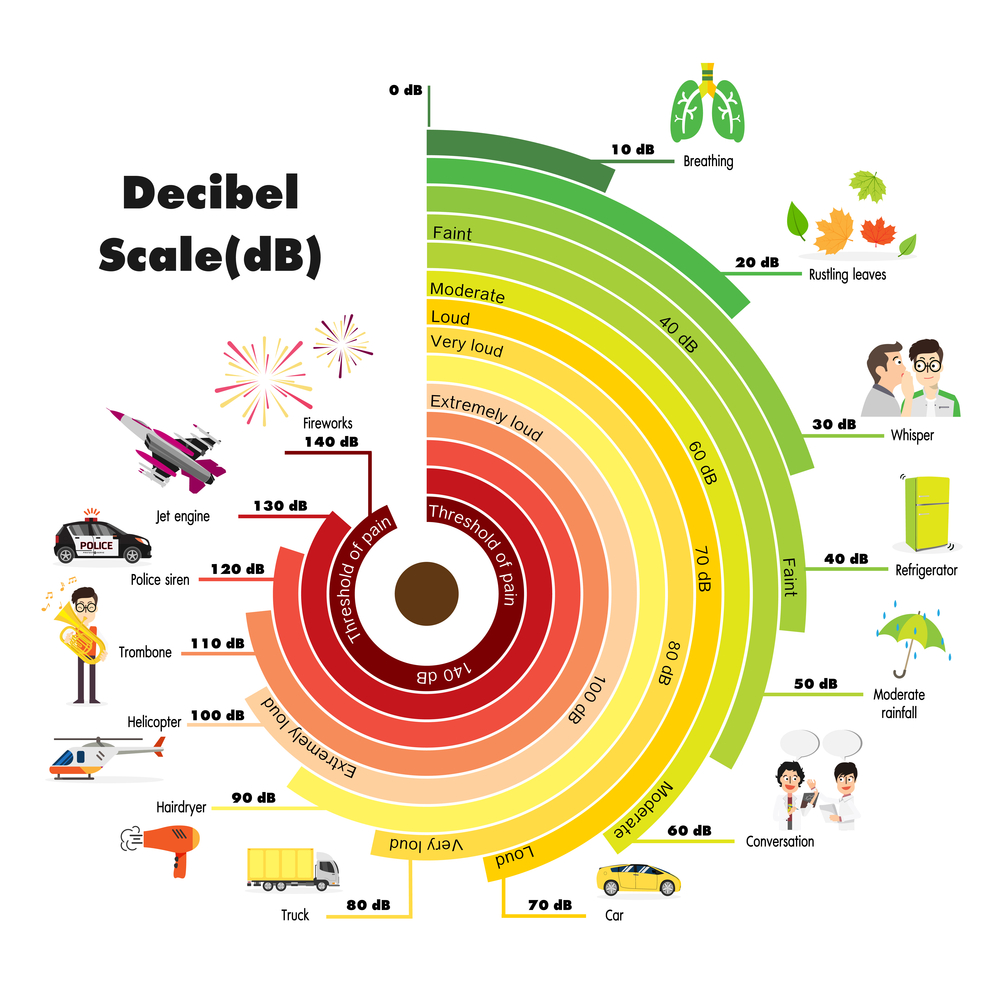
Safe Noise Levels. Sounds under 85 dB are generally considered safe. Let's take a look at a few common decibel examples that fall below the threshold. 10 dB: normal breathing. 20 dB: leaves rustling, mosquito buzzing. 30 dB: whispering. 40 dB: quiet office or residential area, light rain.
Noise Watch out danger Protection Cochlea

Here are some common sounds and their corresponding decibel levels: 0 dB: The threshold of hearing, or the barely perceptible sound of a quiet room. 10 dB: sounds of normal breathing. 20 dB: rustling leaves. 30 dB: soft whisper. 40 dB: light rain. 50 dB: quiet office. 60 dB: normal conversation. 70 dB: vacuum cleaner.
Apa itu Sound Level Meter?
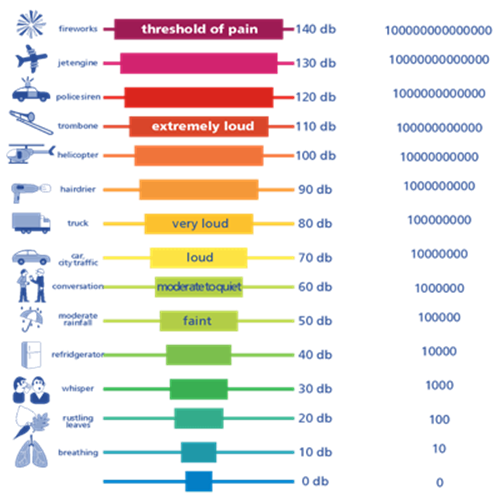
Double ear protection is recommended for shooters, combining soft, insertable earplugs and external ear muffs. Statistics for the Decibel (Loudness) Comparison Chart were taken from a study by Marshall Chasin, M.Sc., Aud (C), FAAA, Centre for Human Performance & Health, Ontario, Canada. There were some conflicting readings and, in many cases.
Decibel comparison chart unaresurveys
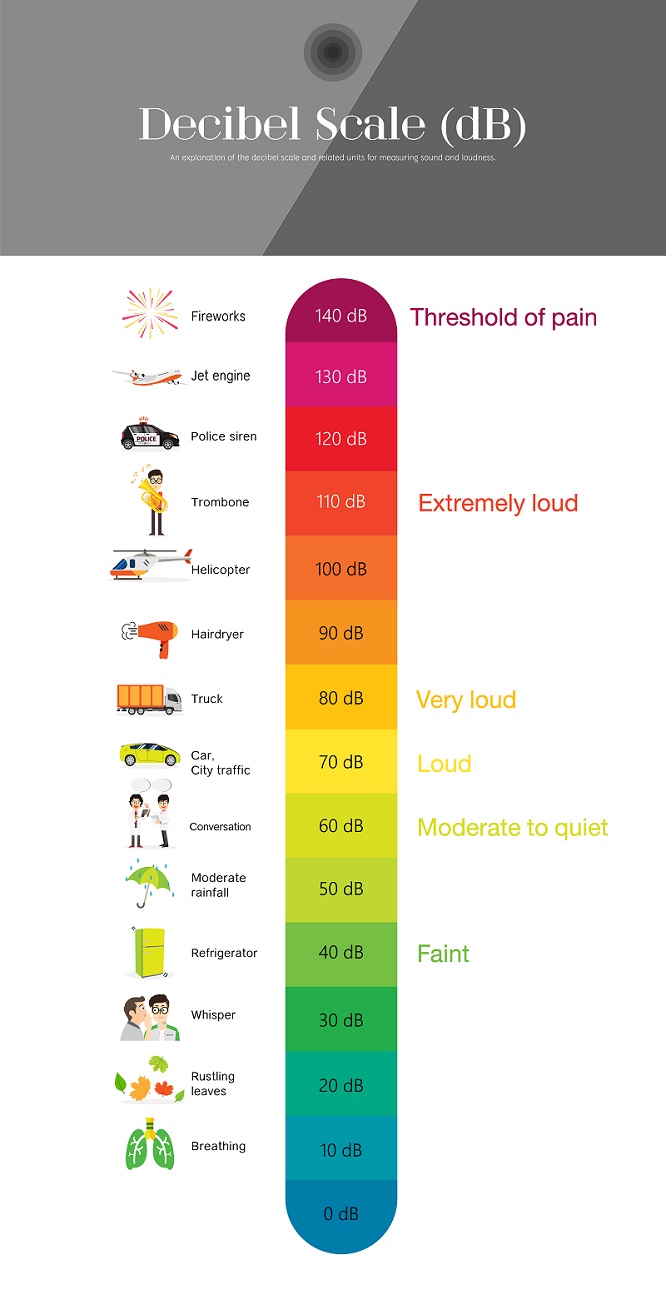
Sounds ranging from 60 to 80 dB are not dangerous to human hearing. Nevertheless, they are still considered loud. The most common examples of sounds in this range are: · busy restaurant - 70 to 80 dB; · loud radio - 70 to 75 dB; · city street - 70 dB; · hairdryer - 70 dB; · dishwasher - 70 dB; · electric shaver - 60 dB;
Decibel Conversion Chart
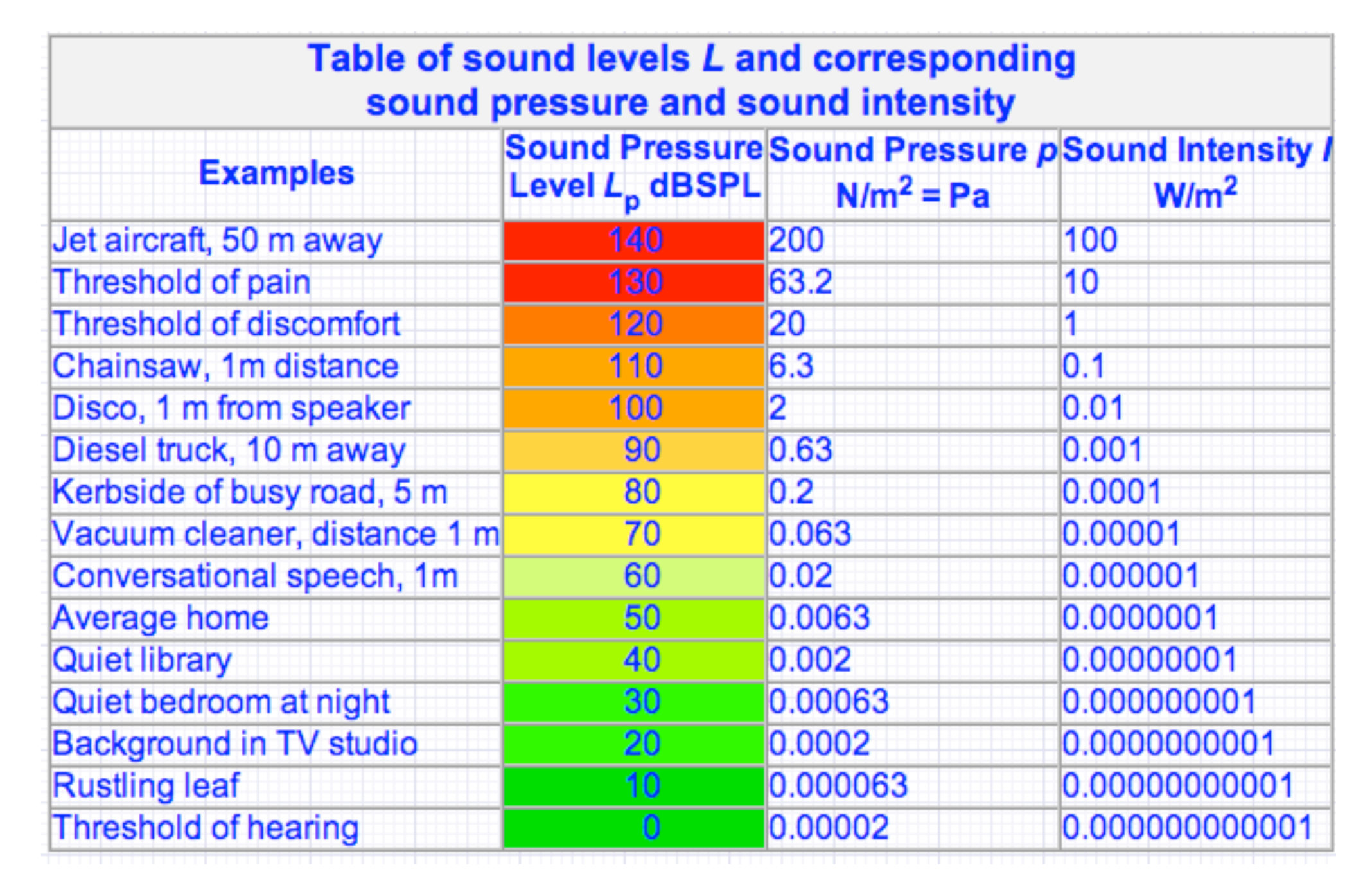
To help you understand how loud a decibel is, we've put together this handy chart with data from Yale, NIH.gov and CDC.gov, ordered from quietest to loudest. Environmental Noise dBA Threshold of hearing 0 Quiet natural area with no wind 20 Whisper 25 Suburban area at night 40 Household refrigerator 55 Business Office 60-65 Normal […]
Noise Level Charts of Common Sounds With Examples BoomSpeaker
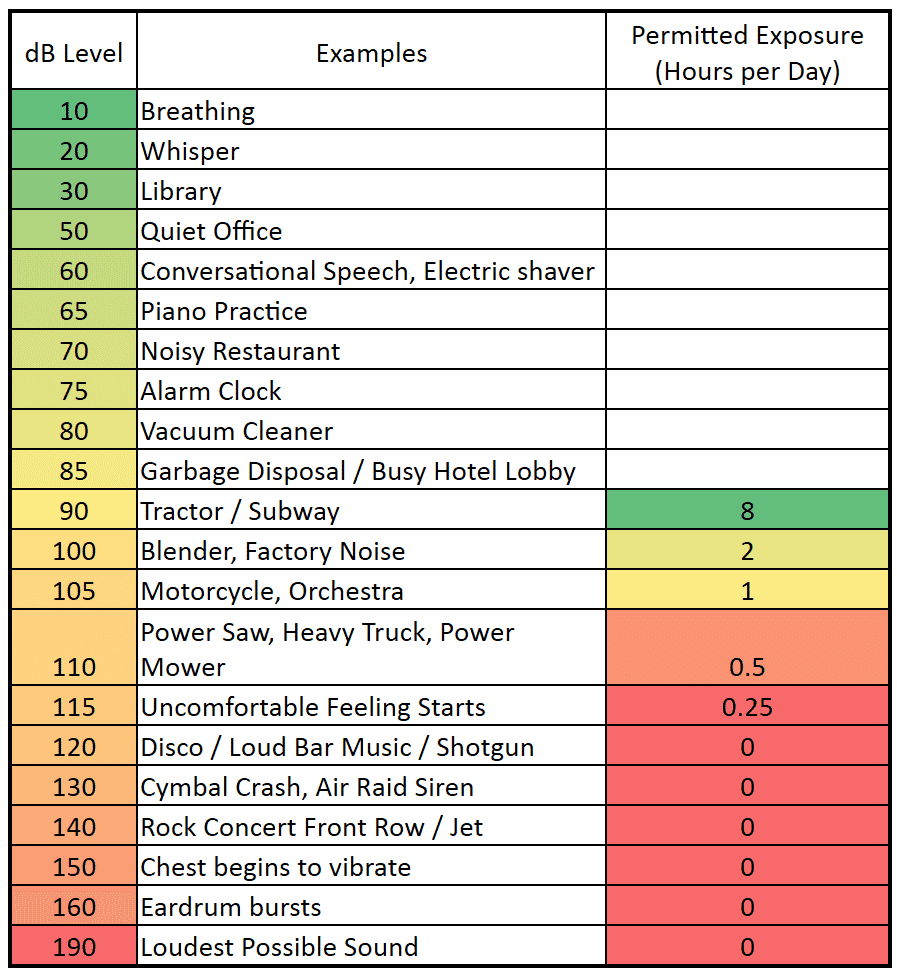
Sound levels are expressed in decibels. Sound levels for common sounds cover a range of about 130 dB. (See chart below for sound levels for common sounds). A quick look at the chart reveals that sound level is very a different thing than sound intensity. Every extra 10 dB corresponds to a sound that is ten times more intense than before.
How Loud Is 85 Decibels What Does 85 dB Sound Like
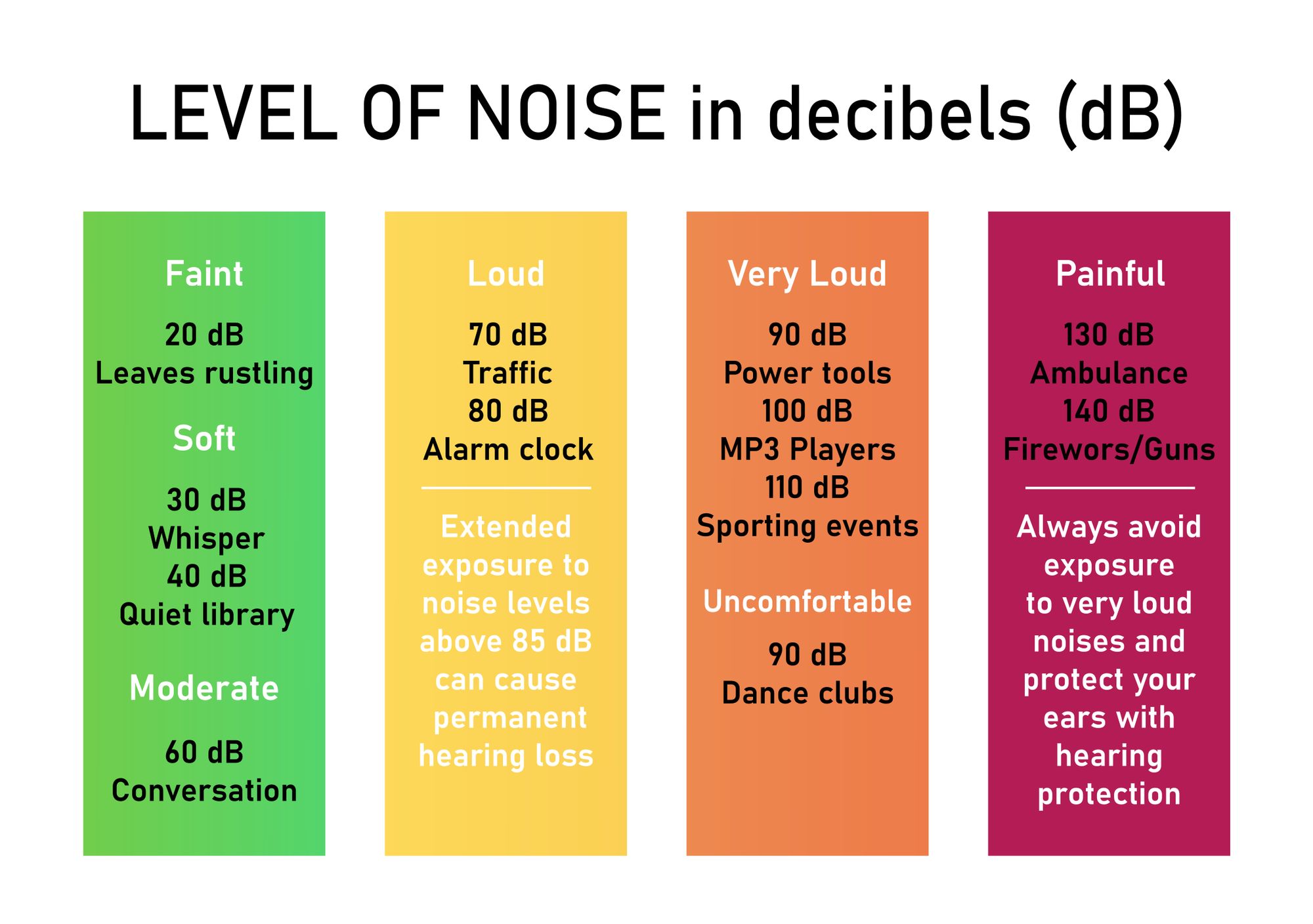
Unsafe decibel levels of sound are those that measure above 70dB. Noise-induced hearing loss can occur overtime from frequent exposure to loud noises, including common tools and products like landscaping equipment (75 dB), food processors (95 dB), and motorcycles (100 dB). And sounds at or over 120 dB (think fireworks and jackhammers) can do.
Hearing loss decibels chart — how loud is too loud?
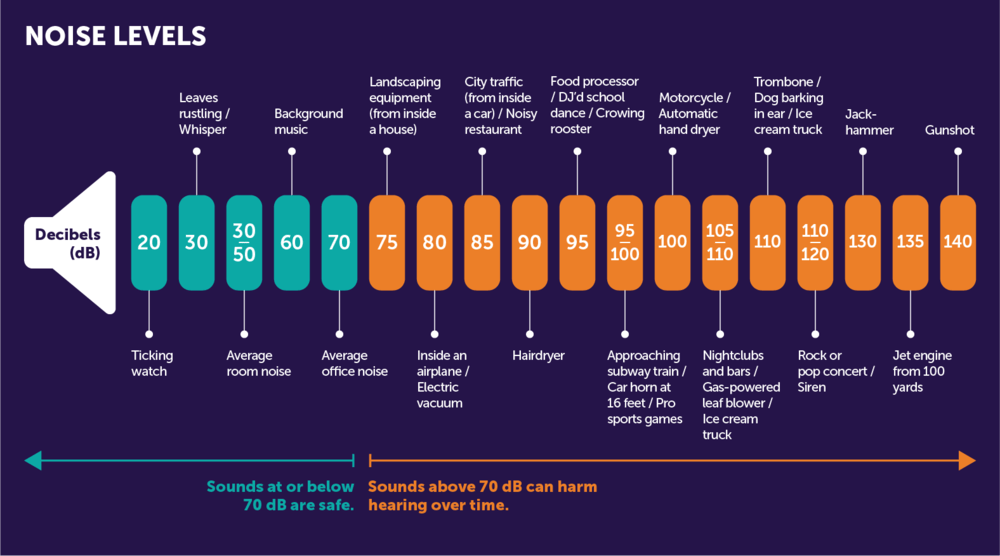
Hearing loss can result from a single loud sound (like firecrackers) near your ear. Or, more often, hearing loss can result over time from damage caused by repeated exposures to loud sounds. The louder the sound, the shorter the amount of time it takes for hearing loss to occur. The longer the exposure, the greater the risk for hearing loss.
La escala de decibelios de nivel de sonido Imagen Vector de stock Alamy

80. 2 times as loud as 70 dB. Possible damage in 8 h exposure. Passenger car at 65 mph at 25 ft (77 dB); freeway at 50 ft from pavement edge 10 a.m. (76 dB). Living room music (76 dB); radio or TV-audio, vacuum cleaner (70 dB). 70. Arbitrary base of comparison. Upper 70s are annoyingly loud to some people.
Decibel rating chart tattoopikol
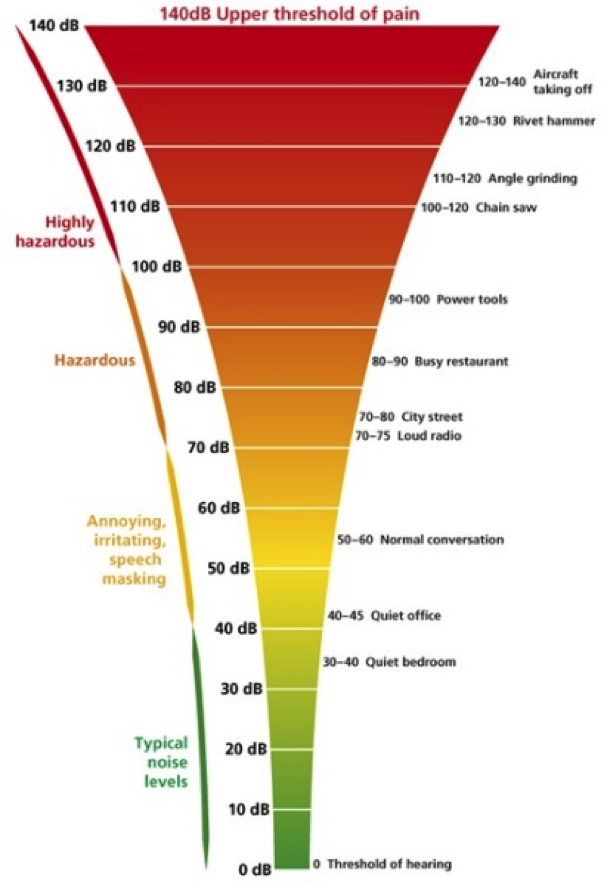
Decibels (dB) are a way to measure how loud or quiet a sound is on the decibel scale. This scale helps us compare sounds, from whispers (around 20 dB) to normal conversations (about 60 dB) and even louder things like concerts (around 120 dB). The tricky part? It's not linear; each 10 dB increase means the sound is actually 10 times more intense.
Concerts, Music, and Decibel Levels What’s the Big Deal?

Maximal Noise Exposure: How to Use This Calculator. To use this noise pollution calculator, enter the noise level in deceibels (dB) and it will automatically calculate the maximum amount of time for safe exposure. You should never expose yourself more than this displayed time to protect yourself from hearing loss.
Scale showing relative loudness of different types of noise Noise

Headphones and earbuds can reach as loud as 100 dB or more, so a safe level is 50 to 60 percent of the maximum volume. This helps protect our hearing and allows us to listen to our favorite music for longer. When using Bluetooth-enabled earbuds, limit the volume using the phone's settings. For venues and events where amplified music is being.
Protecting your hearing Hearing Link
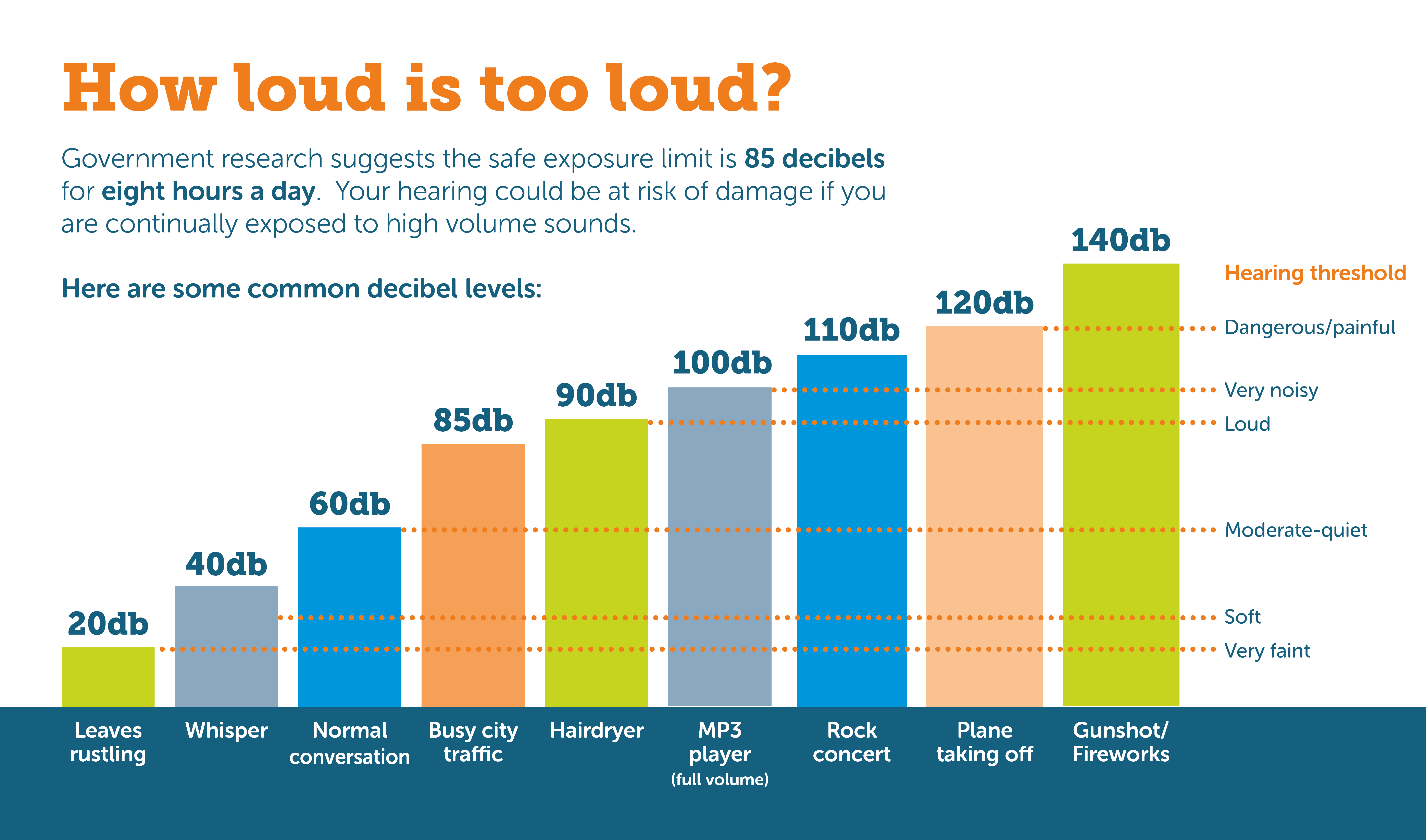
Here are decibel levels for some common sounds: Breathing: 10 dB. Normal conversation: 40-60 dB. Lawnmower: 90 dB. Rock concert: 120 dB. Gunshot: 140 dB. Prolonged exposure to sounds louder than 85 dB can cause damage to your hearing; sound at 120 dB is uncomfortable and 140 dB is the threshold of pain. This is known as noise-induced hearing loss .
.